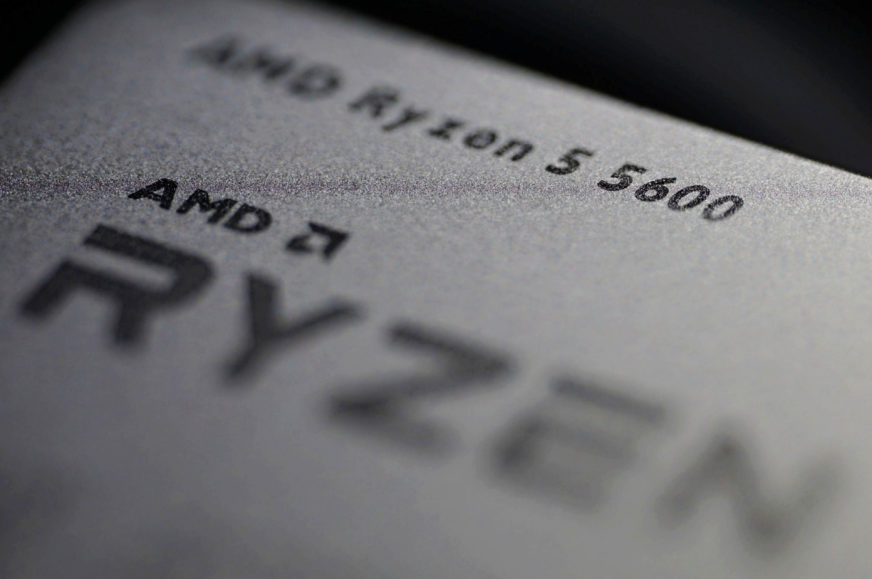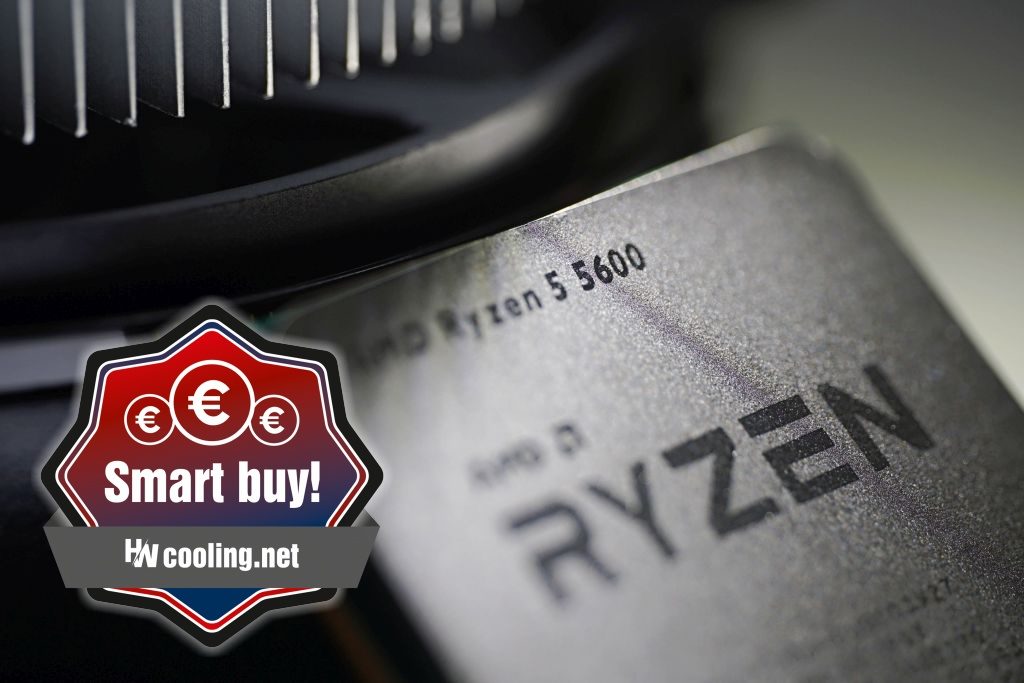Conclusion
In the cheaper mid-range of processors, only Intel has been involved in recent years, gaining a lot of popularity in the segment of the cheapest Core i5s. Similar to the popularity that the Ryzen 5 3600 once had. Since its release, however, Intel has turned around three generations of competing processors to get on the proverbial horse. To knock it off it though, AMD is coming up with the Ryzen 5 5600.
Conclusion
The Ryzen 5 5600 is theoretically 10 % faster than the Core i5-12400(F) in terms of average gaming performance. We say theoretically, because it is a very low-resolution performance, in which the graphics card practically does not play a role. At higher resolutions, where graphics are still not the bottleneck, it’s a bit different and at Full HD already the average gaming performance of the R5 5600X is 4 % lower than the Ci5-12400(F). At QHD it’s only 3 %, at UHD it’s 2 %, and the weaker the graphics card from the test GeForce RTX 3080, the more the difference goes down the drain.
With mid-range graphics mostly ending up with these processors, the gaming performance of both processors is equivalent.
The Ryzen 5 5600 has the biggest advantage in CS:GO and F1 2020 (+4 %) and the biggest deficit in Cyberpunk 2077 (-12 %) in Full HD compared to the Core i5 12400(F). A more significant difference to the disadvantage of the Ryzen 5 5600 is also in Total War Saga: Troy (-10 %) or in DOOM Eternal (-7 %). In Borderlands 3, in Metro Exodus or in Shadow of the Tomb Raider the performance is balanced, with differences below 2 %.
The advantage of the R5 5600 is that it’s a more efficient processor. The word “overall” comes to mind, across all tasks and types of use, but let’s stay with those games for now. For example, Shadow of the Tomb Raider achieves identical performance, but the power draw of the R5 5600 is 24% lower than that of the 12400(F). The AMD processor is closer in power draw to the significantly slower Core i5-10400F (Comet Lake). Compared to Alder Lake, the Ryzen 5 5600 also has 15W less in F1 2020, where it achieves higher performance. In Total War Saga: Troy, where the Ryzen is slower, the power savings are as much as 20W. Thus, gaming performance per watt is clearly higher for the R5 5600 in this comparison, and the efficiency factor is among the 4-core Core i3s (10105F and 12100F).
And one rather interesting tidbit: With simultaneous gaming and streaming through the CPU encoder, more gaming fps loss occurs with the Ryzen 5 5600 processor. In this respect, the Core i5-12400(F) has the upper hand. However, it is usually better to use the graphics card’s hardware encoder for this purpose.
But let’s close the games for now and let’s jump straight into Premiere Pro to the live 4K H.264 preview, for which the Ryzen 7 5700X was the slowest of all the processors we’ve tested so far. Higher fps are achieved with the Ryzen 5 5600, but it’s still not enough for better than second to last place. In a thread on forum.zwame.pt, this was discussed as an anomaly that deserves a more extensive review. The reason why such low fps is achieved in the first place is due to the low frequencies. Live playback itself is a single-threaded task, but running at an all-core boost frequency because there are Premiere Pro subtasks running simultaneously on other processor cores. In the case of the R5 5600X, the frequencies are 300 MHz higher than on the 5700X, so even that performance increase is relatively high. But it’s also clear from the results that 4K AVC playback doesn’t suit the Zen 3’s processor, and per clock, the Zen 2 is faster at this. But for other codecs like ProRes 222 and 4K RED, this is no longer the case, with them the expected performance is already there even on the Ryzen 5 5600.
For video editing in Premiere Pro, the Core i5-12400 is faster for most tasks. But in DaVinci Resolve Studio, the R5 5600 has the upper hand. The Ryzen 5 also falls a little short in this comparison in Adobe Affter Effects and in Adobe Photoshop. But it’s very tight and like on a swing. One filter is faster with Ci5-12400, the other with R5 5600. So to choose the more suitable processor, it’s a good idea to analyse those results properly and sort them by which features you use more and which you use less (or not at all) in those applications. For bulk photo editing on Lightroom and and Topaz Labs apps, the Ryzen 5 5600 is a bit slower, but again, it achieves better times in XnView and in Zoner Photo Studio X.
Performance for x264/x265 video encoding is equivalent with the Ryzen being more economical (and thus more efficient). 3D rendering is a hair faster on the Ci5-12400(F), but that’s a discipline that doesn’t get into practice much on this class of processor. The R5 5600’s single-threaded performance is also a bit weaker. This can be seen in audio encoding tests, and in common office tasks, and even in a web environment. Again, however, it should be pointed out that these are never significant differences and most importantly, the AMD processor is always more economical. At a noticeably higher performance, it has lower power draw even compared to the Ryzen 5 3600. This goes hand in hand with lower temperatures and lower cooling requirements. So you can use a smaller, quieter, cheaper or overall simpler cooler, such as the SilentiumPC Spartan 5.
The Ryzen 5 5600 is a pretty tough nut to crack for the Intel (12400/F). Where the AMD processor isn’t more powerful, it’s at least more efficient. In some tasks, it is even more powerful at lower power draw. So there is finally some fierce competition in a class where we can talk about attractive price/performance ratio for both games and non-gaming applications.
English translation and edit by Jozef Dudáš
| AMD Ryzen 5 5600 |
| + Excellent price/performance ratio. Both in games and outside of them |
| + Gaming performance virtually on par with the Core i5-12400(F), but at significantly lower power draw |
| + High-end single-threaded performance |
| + Perfect efficiency or performance per watt |
| + Much more efficient than the Intel Core i5-12400(F) |
| + High performance per clock (IPC) |
| + Low temperatures with a decent headroom for PBO2 or manual overclocking |
| + Modern 7 nm manufacturing process |
| - Although only marginally, it often falls behind the Core i5-12400(F) in performance |
| - Does not have an integrated graphics core |
| Approximate retail price 199 EUR |
Games for testing are from Jama levova
Special thanks to Blackmagic Design (for a DaVinci Resolve Studio license), Topaz Labs (for licenses for DeNoise AI, Gigapixel AI and Sharpen AI) and Zoner (for Photo Studio X license)
- Contents
- AMD Ryzen 5 5600 in detail
- Methodology: performance tests
- Methodology: how we measure power draw
- Methodology: temperature and clock speed tests
- Test setup
- 3DMark
- Assassin’s Creed: Valhalla
- Borderlands 3
- Counter-Strike: GO
- Cyberpunk 2077
- DOOM Eternal
- F1 2020
- Metro Exodus
- Microsoft Flight Simulator
- Shadow of the Tomb Raider
- Total War Saga: Troy
- Overall gaming performance
- Gaming performance per euro
- PCMark and Geekbench
- Web performance
- 3D rendering: Cinebench, Blender, ...
- Video 1/2: Adobe Premiere Pro
- Video 2/2: DaVinci Resolve Studio
- Graphics effects: Adobe After Effects
- Video encoding
- Audio encoding
- Broadcasting (OBS and Xsplit)
- Fotky 1/2: Adobe Photoshop a Lightroom
- Fotky 2/2: Affinity Photo, Topaz Labs AI Apps, ZPS X, ...
- (De)compression
- (De)cryption
- Numerical computing
- Simulations
- Memory and cache tests
- Processor power draw curve
- Average processor power draw
- Performance per watt
- Achieved CPU clock speed
- CPU temperature
- Conclusion










